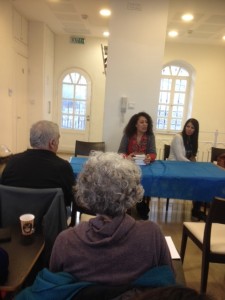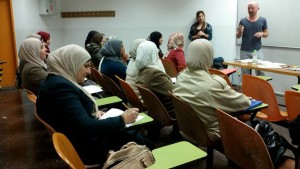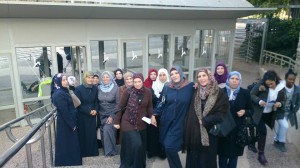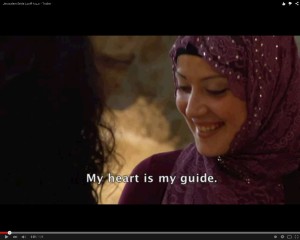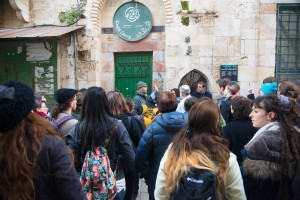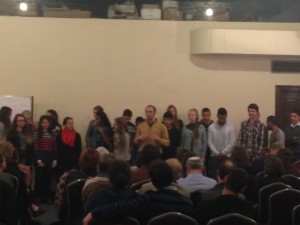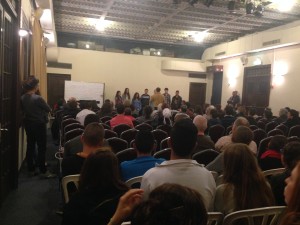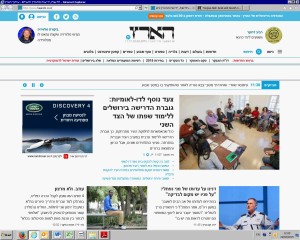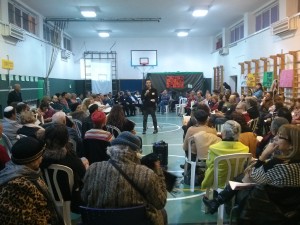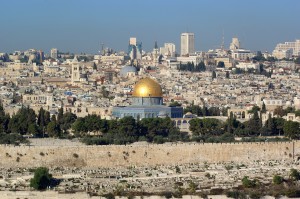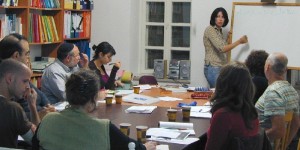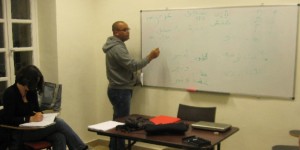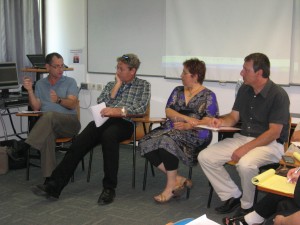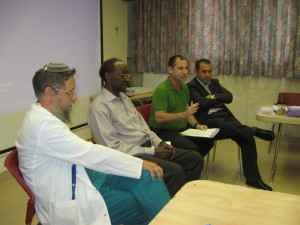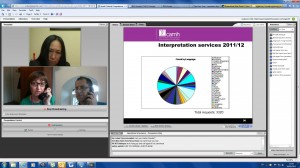Arabic Classes Live Arabic Culture
Last night, our Arabic classes not only practiced their Arabic, we opened a window to the richness of Arabic culture. We hosted author Sheikha Haliwa, who read from a number of her poems and stories. She told her life story – about growing up in an unrecognized Bedouin village near Tivon that was destroyed by the government in 1991, about studying in junior and senior high school at a Christian school in Haifa, and about her marriage to her cousin in Jaffa, where she currently lives.
We had about 40 of our students in levels 3-5 attended the amazing evening.
These evenings have become an integral part of our Arabic classes. You can read here about last year’s program. We can hardly wait for the next one, scheduled for the end of February! These evenings during the year are for our more advanced students, and we’re planning a special tour in May for our beginning students.
Thinking about studying Arabic? You’d better hurry – classes are already filling up fast for next year!!! This year we’re breaking records, with 180 students in 12 classes, over 5 levels. We’ve added a new teacher – Gali – to help out Anwar and Suha. We have classes going in the mornings and afternoons, most days of the week, and we’re already planning for next year. Many thanks for the Jerusalem Foundation for their ongoing support of this project.

